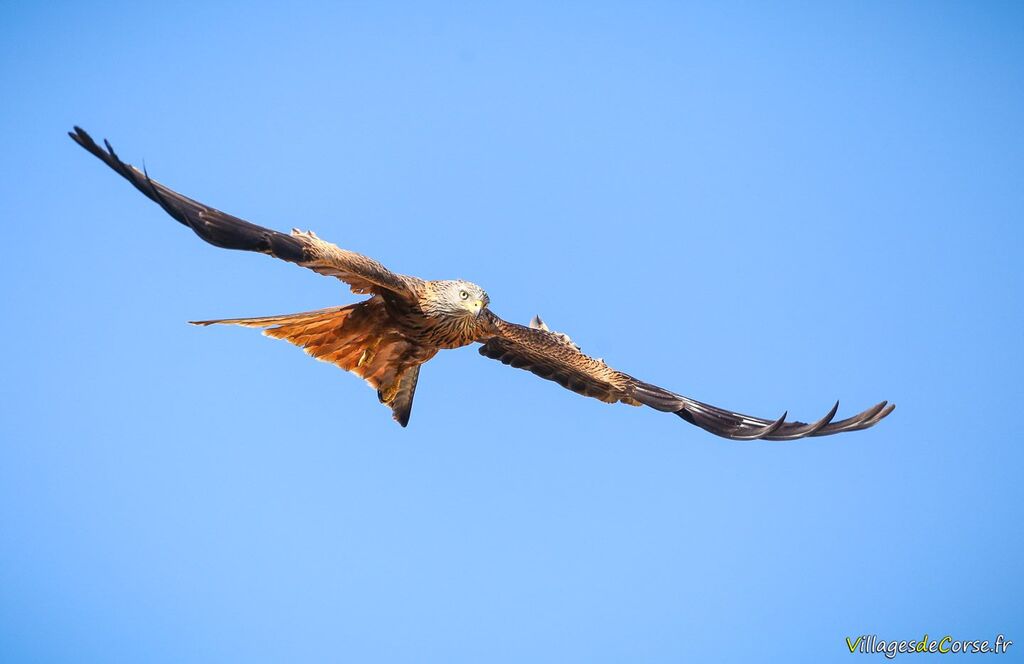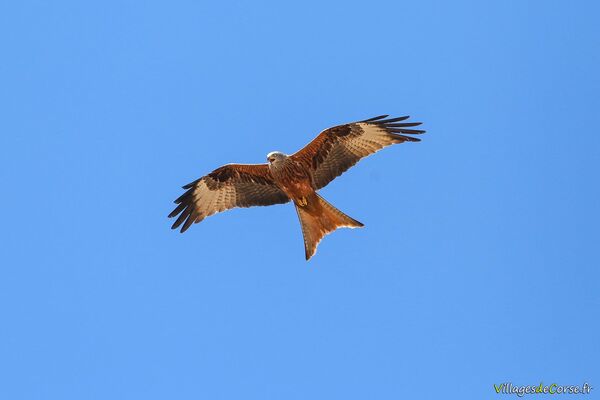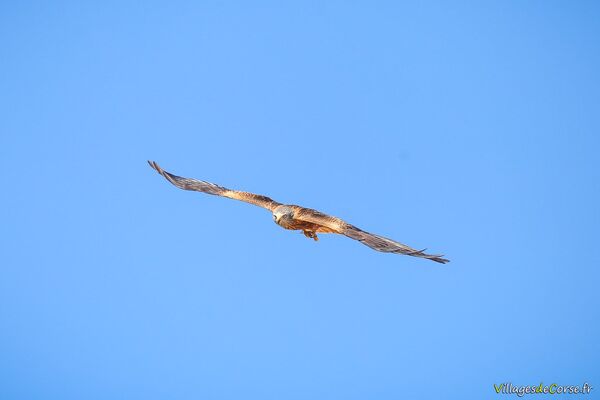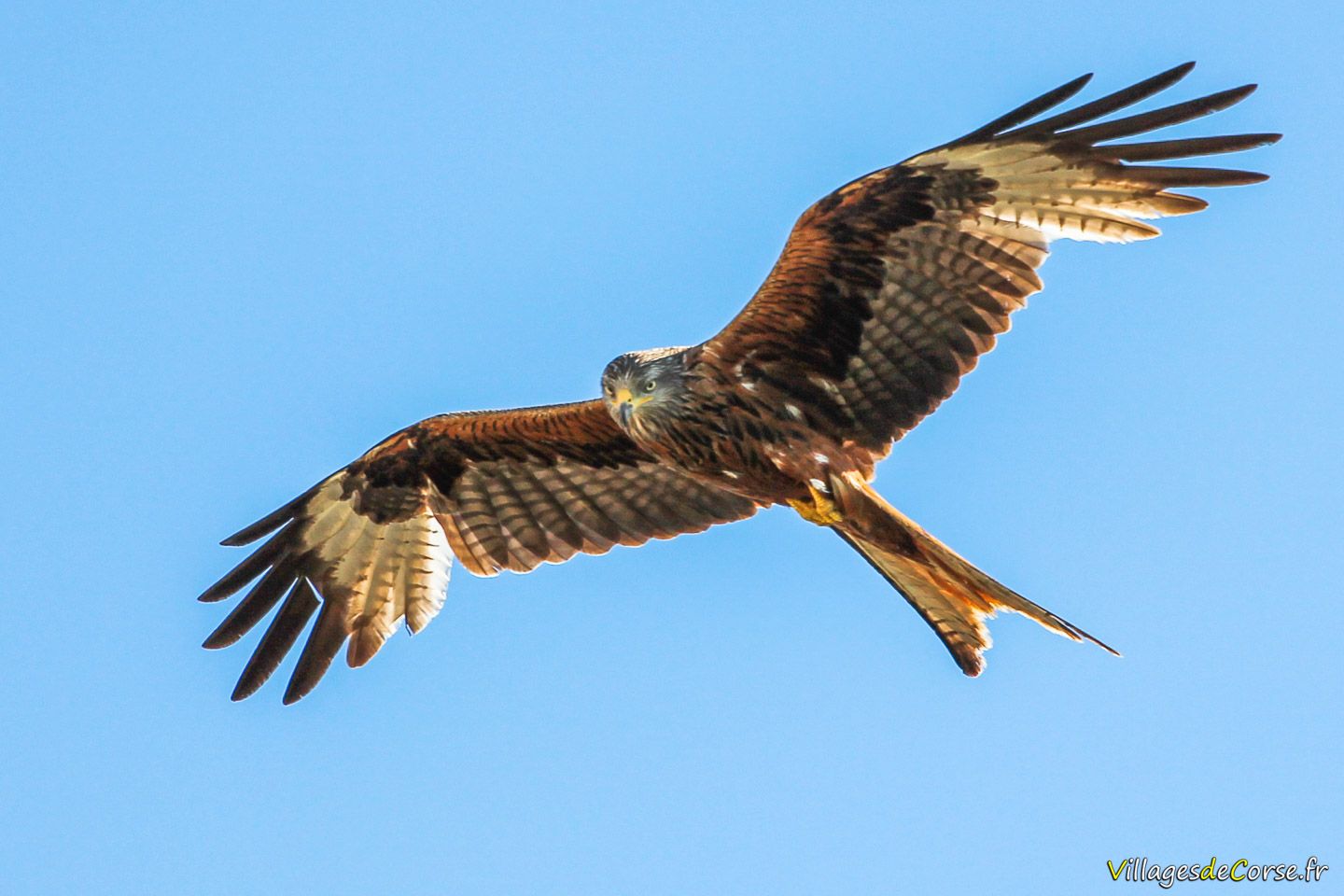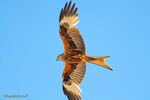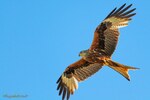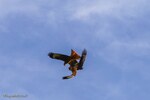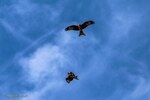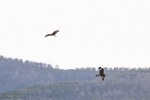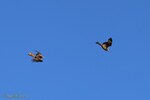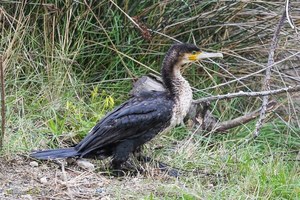- Articles
- Fauna and Flora
- Birds
- Milan Royal
Milan Royal, Corsican Raptor - U Filanciu - Video
Origin of the Name "Red Kite"
As a little anecdote, the Red Kite (Milvus) owes its name to Louis XIII, who marked the raptors before releasing them from the window of the Louvre. In the plural form, the agreement is as follows: Red Kites. In English, its biological name is the Red Kite.
The Most Widespread Raptor in Corsica
Approximately 300 pairs of Red Kites are recorded on the island. They should not be confused with other diurnal raptors such as the Buzzard, the Falcon, the Sparrowhawk, or the Golden Eagle, which is larger and lives at higher altitudes. The habitat of the Red Kites is primarily concentrated in areas of medium and low altitude (0 to 1000 meters) with sparse vegetation, providing these raptors with a clear view of the ground, ideal for spotting prey.
The Red Kite - u filanciu in Corsican - is very common in the Balagne region, in Nebbiu, Cortenais, and the north-western part of the greater Ajaccian region. Balagne hosts the majority of Red Kites in all of Corsica, a significant presence possibly linked to the abundance of rabbits in the Reginu plain.
Corsica is a territory where the Red Kite continues to thrive. Soaring over all the contours of the island, it indeed appears to be the king of birds. And yet, it is not uncommon to witness comical scenes, such as when a crow harasses it in the air and drives it away if it encroaches on its territory. A similar scene can also be observed between the Red Kite, in the role of the harasser, and the Golden Eagle, as if in the air, the smaller one takes precedence over the larger.
Diet of the Red Kite
The raptor is both a predator and a scavenger. Its diet varies according to its environment. Gliding along air currents, it spots prey with its keen eyesight, such as small rodents (rats, voles, mice), small birds, fledglings, or animal carcasses (rabbits, hedgehogs) which are abundant in Corsica. Before diving onto its prey, it hovers above in a circling motion, descending in altitude while emitting a distinctive cry that signals its imminent action. In a photograph, one can distinguish a rat between the claws of a Red Kite.
When its habitat is near the sea or close to a lake, it may occasionally feed on surface fish, which it snatches with its claws, demonstrating remarkable agility.
Habitat
The Red Kite is present in Corsica at all altitudes. It is mainly found along the coast, in plains, in mid-altitude mountains, and more rarely beyond 1000 meters. It defends its own territory against its conspecifics. It prefers open spaces to forested areas to increase visibility of its prey and allow it to swoop down without obstacles. Its numbers are slightly higher in Haute-Corse than in South Corsica.
Endemic Species of Europe
The Red Kite is native to the European continent, which accounts for more than 90% of the world's population. Their primary geographic distribution forms a belt extending from the southwest to the northeast, crossing Spain, France, Italy, Germany, Poland, to the Nordic countries and Ukraine, as well as Wales. However, they can also be found in England and other Eastern countries.
It is a partially migratory bird because, while southern populations are sedentary, this is not the case for their northern counterparts who migrate south for the winter. Postnuptial migrations occur from August to November in small groups.
The Red Kite is a protected species, considered threatened since 2005. Data on the Red Kite populations come from the Conservatoire d'Espace Naturel (CEN) of Corsica and the SPAs - Special Protection Areas (for birds) - established on the island, which is an EU directive.
Characteristics
The wingspan of the adult Red Kite ranges from 150 to 160 cm when wings are spread. The male is smaller than the female, weighing just under one kilogram, while the female can reach up to 1.2 kg. The raptor is distinguished by its forked red tail and tricolored plumage (white, red, and black) which aids in its navigation. Its typical raptor wingtips help it maneuver in the air and have inspired aeronautical design in aircraft construction.
Its call is easily recognizable, resembling a whistle with a long, monotonous phase followed by short reprises.
Reproduction
Living as a couple with a lifespan of about twenty years, the Red Kite builds its nest on the high branches of a tree using straw collected from the surroundings.
In Corsica, the Red Kite's breeding season begins just before spring. It can easily be observed during the raptor's courtship display, where the male appears to collide with the female in the air, sometimes engaging in a spiraling dance descending in free fall. In the video at 1 minute 35, we see the first case, a moment that also highlights the size difference between the male and female.
Egg laying occurs in March and April. The female Red Kite will not leave her nest from the moment the first egg is laid, and she will generally lay three eggs, sometimes up to four. During this period, the male will feed the female. The incubation period for the eggs is almost 40 days, with an egg needing 30 days of incubation plus the gap between the first and the last egg.
Census and Evolution
With approximately 20,000 pairs worldwide, the Red Kite, once very widespread, has been placed under protection following its decline observed in all countries (except Corsica) over recent decades. A campaign for reintroduction in Tuscany of the Red Kite has been undertaken using young raptors from Corsica, Switzerland, and Spain. Similar actions have also been carried out in Wales and Great Britain.
